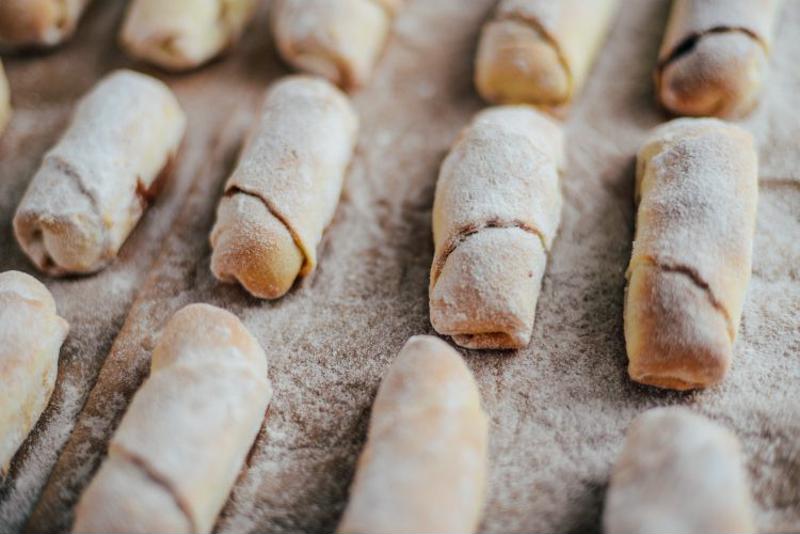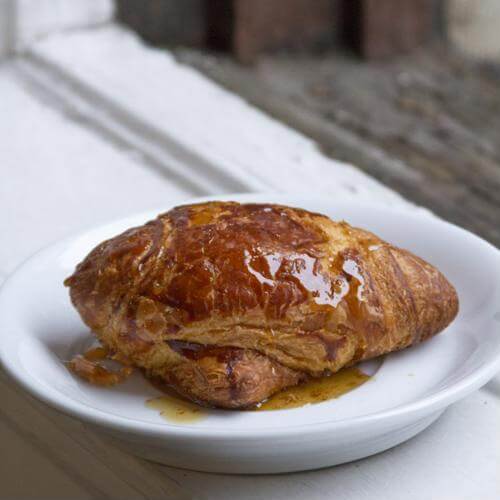Why the use of artisanal grains in pastries is on the rise
The growing popularity of gluten-free diets and trendy ingredients like ancient grains have made a big impact in the world of the baking and pastry arts. One outcome is a notable shift in the way culinary professionals use grains for their creations. It’s becoming increasingly common for chefs and bakers to step away from the familiar cultivated wheat and embrace some intriguing flavors and textures.
While the use of artisanal grains is more commonly associated with bread making, these developments have also impacted pastries. A wide range of desserts are being rebuilt with a surprising assortment of grains as their foundations. Any chef who’s interested in exploring fresh approaches to beloved treats should try incorporating some of these ideas.
The flours of experimentation
“Try flours such as barley, buckwheat, amaranth and kamut.”
One of the leading voices in the movement toward getting creative with grains for baking is Kim Boyce. The Portland, Oregon-based pastry chef and cookbook author set out to show baking enthusiasts how they could using a wide range of flours in their dishes, such as barley, buckwheat, amaranth and kamut. She shared directions for whole grain, ultra-chocolaty cookies with Bon Appetit that utilize spelt flour.
Stir together melted butter and bittersweet chocolate. Add four eggs and sugar to the bowl of a standing mixer, whipping at high speed for three minutes. Scrape in the chocolate and mix at low speed.
Sift the flour, along with baking powder and salt. Pour these ingredients into the chocolate mixture and combine at low speed. Stir in more chopped chocolate and refrigerate the dough for a minimum of two hours.
Scoop out balls of dough, rolling them in cacao nibs and setting on parchment-lined baking sheets. Bake for up to 20 minutes, checking for nibs to be toasted and the edges to become firm. Allow to cool before serving.
Taking on a whole-grain challenge
Taking alternative approaches to the grains in baked goods is not always easy. Just ask pastry chef Charbel Abrache, who works at Seylou Bakery & Mill in Washington, D.C. NPR reported that this establishment, founded by head baker Jonathan Bethony, is based around the idea of using locally sourced, truly whole grain for an array of baked goods.That means including all of the bran and germ in the flour, components that are usually largely sifted out for simpler preparation, and eschewing any added white flour, gluten or yeast.
The results can be extra-flavorful and nutritious, but there’s also considerably more effort involved in developing recipes and carrying them out. Nonetheless, Abrache makes the daily selection of pastries with only whole grains, no refined sugar and a focus on regional ingredients. The offerings that come out of these painstaking specifications include chocolate croissants made with local butter and caneles prepared from millet flour and sorghum syrup.
 Using unconventional flours may unlock new possibilities for your baking.
Using unconventional flours may unlock new possibilities for your baking.An ancient secret to baking a pie
To get started on using different grains in your pastries, take a cue from Whole Foods. The retailer offered an easy recipe for a pie dough made with ancient grains. Specifically, the directions call for a cup each of teff flour and quinoa flour.
Whisk the flours with sugar and salt before working in cold butter with your hands. Pour in half a cup of water and knead. Split the dough in half and refrigerate for at least half an hour. Then, roll out on a floured surface when you’re ready to make your pie.
Artisanal grains bring exciting new possibilities for your baking. Add unique character to your dishes by getting creative with alternatives to your usual pastry flour.


